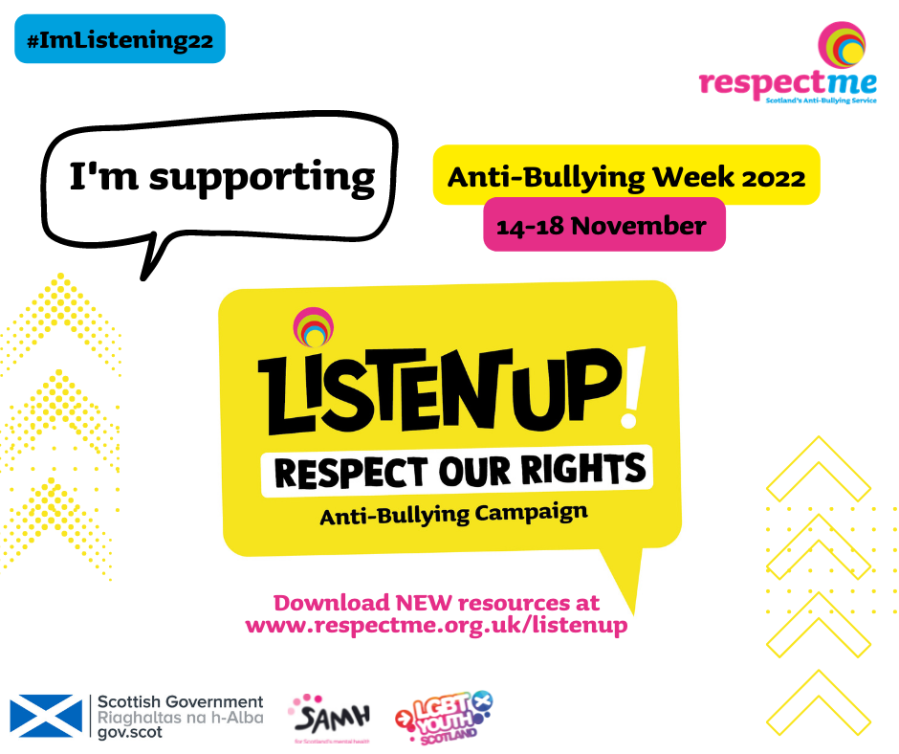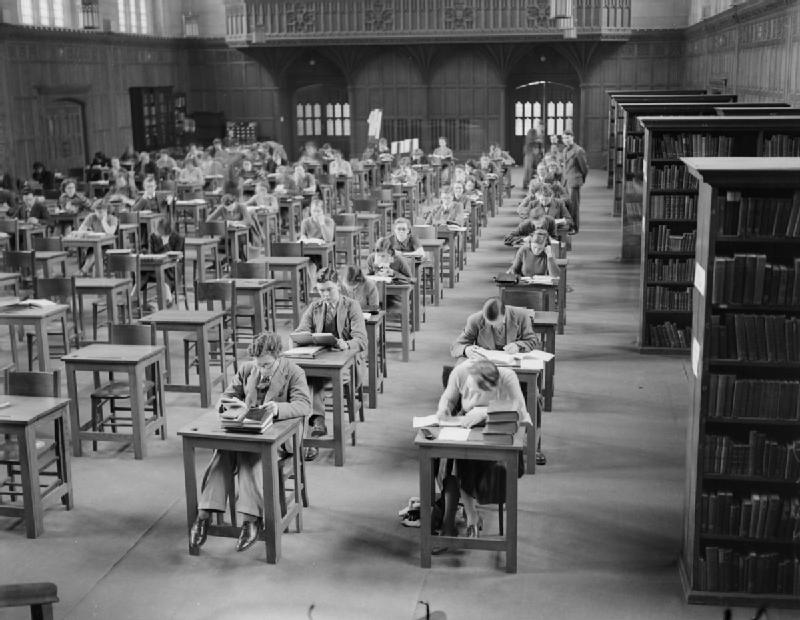Friday 8 March 2024 is International Women’s Day. Presumably to co-incide with this, the Scottish Government have released “Preventing and Responding to Gender Based Violence: A Whole School Framework“. It is noteworthy that the Scottish Government describe the document as a framework, rather than as guidance. However, the document does say that one of its purposes is “providing guidance to support schools’ responses to GBV experienced, or carried out by, children and young people or other members of the school community, including staff”. How well it succeeds in this aim may be the subject of debate, as we shall see.
Children’s Rights
The framework is set in the context of children’s rights (as it should be) and in particular references the right to protection from violence (Article 19, UNCRC) and the right to an education which develops respect for others’ human rights (Article 29, UNCRC). Of particular relevance here, for those looking for some additional reading, is General Comment 18 of the Committee on the Rights of the Child on harmful practices (issued jointly with the Committee on the Elimination of Discrimination against Women).
Gender Based Violence is defined as “any form of violence used to establish, enforce or perpetuate gender inequalities and keep in place gendered orders” and thus includes violence against women and girls, but also homophobic and transphobic violence. The framework notes that Gender Based Violence can take many forms, including:
- physical, sexual, emotional, verbal or psychological abuse and violence;
- domestic abuse or relationship abuse (including coercive control);
- rape, incest or unwanted touching;
- non-consensual sharing of sexual images;
- sexual harassment or intimidation (including online);
- commercial sexual exploitation;
- “honour based” violence, including female genital mutilation and forced or child marriage;
- transphobic, homophobic or biphobic bullying.
Disability
There is a mention of intersectionality and, within that section, specific mention of pupils with disabilities. The framework notes “Violence targeted at disabled girls may include abuse targeted at their disability as well as misogyny, and they may also encounter additional barriers to accessing support.” To this I would add that pupils with disabilities may be particularly vulnerable to abuse due to their disability, particularly where assistance with personal care is required, and may experience difficulties in communicating instances of violence or abuse to appropriate bodies where there are communication difficulties.
A whole school approach
The framework describes itself as a “Whole School Framework” and espouses a whole-school approach to addressing Gender Based Violence. This is seen as encompassing:
- universal approaches – e.g. challenging gender stereotypes and roles, changing the language and practices that support gender inequality, and curricular input
- targeted action – e.g. responding to patterns of incidents or unacceptable attitudes / behaviours which are not directed towards an individual
- targeted action – e.g. responding to incidents involving individuals, wellbeing assessments and meeting individual needs
- specialist action – e.g. child protection procedures
The aim is to “positively influence school culture by fostering a shared, consistent approach tackling the underlying gender inequalities that underpin Gender Based Violence”.
From the outset the framework is clear that “If there is a risk of significant harm to the child or young person, school staff should always invoke child protection procedures, rather than seeking multi-agency voluntary support.” The dividing line between Gender Based Violence that involves a risk of significant harm, and Gender Based Violence that does not, is less clear.
Among the key features of a universal approach is this: “All school policies should actively promote gender equality. The prevention of Gender Based Violence will intersect with all areas of school life, such as uniform policy or subject choices.” Indeed, the recent consultation on school uniform included the principle that national school uniform policy should promote “equality, including recognising specific matters relating to religion and belief, disability, sex and gender.”
The one clear recommendation which comes through here (as it does elsewhere in the framework), which should be top of schools’ “to do” lists would be to ensure that you have a Gender Based Violence policy (or a Gender Based Violence section within your existing behaviour and relationships policy). The policy (or section) should “provide specific information about how [the school] will manage instances of Gender Based Violence and support all those involved”. Regrettably, there is little in terms of specific guidance on what such a policy should contain. An example policy, or a style with headings and prompts would have been extremely useful – and is sadly lacking.
Preventing Gender Based Violence
The section on preventing Gender Based Violence is at some length and is probably where the framework is at its strongest. It includes plenty of links to resources which a school could use as part of a strategy to address gender inequality. The key tools here are seen as:
- school culture and ethos;
- policies and systems;
- professional learning and development; and
- curriculum.
Schools are urged to consider, for example, “whether the rules on school uniform reinforce gender stereotypes or place undue restrictions on girls and young women, and whether girls and young women have equal access to sports activities, play and resources.” The framework goes further, noting that ensuring equal access to sports may require “protecting time slots for girls to use equipment or spaces”.
In terms of the curriculum, there are some specific suggestions on how to promote gender equality across the curriculum, including:
- taking a non-gendered and inclusive approach to PE;
- discussing gender stereotypes in texts;
- asking whose voice has not been heard in novels;
- learning about feminism and women’s rights in social subjects;
- learning about a diverse range of women artists / scientists as well as “their often more famous white men counterparts”.
The framework also includes a list of suggestions from primary school pupils, which include “more opportunities for girls to play football and boys to play netball”, “maths questions shouldn’t say girls do skipping and boys kick a ball” and “uniforms should be .. equally enforced” – all of which is absolutely fair enough. As a side note, I did play netball at primary school (Goal Defence, if you’re interested)!
The framework encourages a trauma-informed approach to all of this, which includes making sure that “children and young people know what will happen if they make a disclosure relating to Gender Based Violence”. However, the framework itself is not really clear (in my view) about that. It does specify that child protection procedures should be followed in some cases – but not really what should happen if those procedures are not to be followed (or while they are being followed).
Responding to Gender Based Violence
The framework then turns from questions of culture, ethos and training (which I feel it does quite well) to the issue of responding to incidents of Gender Based Violence, which I think suffers from a lack of detail and direction.
The threshold set out by the framework for applying child protection procedures is where a member of staff “has concerns that a child is at risk of significant harm”. The term “significant harm” is not defined or illustrated within this document. Perhaps professionals are already sufficiently familiar with the term from other contexts?
There are broad exhortations to respond sensitively, to support the children involved, and to align the response with the National Child Protection Guidance. All of which is fine. But there is little in terms of specific notes on what to do. I suspect that what schools are looking for here is clarity, but they will have to look elsewhere – or create their own.
For example, there is an example given of a suggestion made by children and young people’s groups in Stirling and Angus that “It might be helpful to ask if the person experiencing Gender Based Violence would like a friend to accompany them while they speak with school staff, if staff members consider this appropriate and in light of the need to protect the wellbeing of all young people.”
Setting aside for one moment the fluent management speak the young people of Stirling and Angus seem to have adopted wholesale, what are we to make of this? The framework presents this suggestion in a shaded box, divorced from the rest of the text. So, is this a good idea? Is it good practice? Should schools include this in their policies? When would it be considered appropriate (or not)? Should parents be invited / allowed to attend such discussions? We are not told.
In terms of a response to incidents of Gender Based Violence at school, there is a lot about support for both those who have experienced Gender Based Violence and those who have carried out Gender Based Violence. A child’s plan is mentioned more than once as a tool which might be used for a pupil who has carried out Gender Based Violence “with a view to identifying causes and appropriate interventions including additional resources to reduce the likelihood of recurrence”.
Schools are encouraged to identify and name behaviour that constitutes Gender Based Violence, and their policy should set “clear expectations of acceptable and unacceptable behaviour, and the associated responses which school staff can utilise.”
Again, examples of either would have been of use here, I feel. In fairness, the framework does make the important point that using restorative approaches may well be inappropriate as it “has the potential to be unsafe or retraumatising” and notes that “reconciliation may not be possible or advisable in cases of Gender Based Violence”
Child Protection
The framework is pretty clear on this point – “School staff should report incidents of Gender Based Violence where they are aware of, or have reason to believe, that a crime may have occurred or that a child or young person has been seriously harmed.” Onward reporting to Police Scotland and social work should be in line with school child protection procedures.
Collecting Data, Staff and Scenarios
The framework concludes with a section on monitoring, recording and evaluation, and one of Gender Based Violence experienced by staff, neither of which we have time to cover in this (already overly lengthy) article.
There are seven scenarios listed at the end of the framework, although the responses tend to be in the “you should consider these factors” rather than “here’s what you should do” model.
An appendix of professional learning and resources at the end is comprehensive and includes some excellent material. There is enough further reading here to keep you going for months!
Conclusion
I should begin by stating that I am not an expert in this field, and have only occasionally have had cause to advise families whose children have experienced Gender Based Violence. Overall, I think the framework does a very good job of raising and discussing the issues, and I think it would be very helpful in assisting schools with the ethos and culture / preventative side of things. I am less clear of its usefulness in terms of responding to actual incidents.
There are mixed messages about bullying. The National Approach to Anti-Bullying is not listed as one of the resources, although it is referenced within a description of the resource on challenging homophobia, biphobia and transphobia. The National Approach appears to draw a clear line between bullying and Gender Based Violence: “Some behaviour can be perceived as or assumed to be bullying. However, certain incidents can often be more serious and, in fact, criminal in nature. Understanding the individual circumstances is important to ensure that there is a clear distinction between bullying and criminal offences such as hate crime, child sexual exploitation and gender-based violence such as domestic abuse and sexual assault. For instance, when someone is coerced or pressurised to do something sexual or is touched inappropriately, this is not bullying, this is sexual assault or abuse and a form of gender-based violence.” Whereas the framework lists bullying as an example of Gender Based Violence. Some clarity on this point would be welcome.
The section on the law at the end of the framework slightly overstates the reach of the Equality Act 2010 – claiming that it places specific requirements on schools “to prevent unlawful discrimination, harassment and victimisation in their schools”. The equivalent section within the National Approach is more accurate – “Although the harassment provisions of the Equality Act 2010 do not protect pupils from harassment by other pupils, the Act creates a duty on public bodies to have due regard to the need to: eliminate discrimination, harassment and victimisation; advance equality of opportunity; and, to foster good relations between people who share a relevant protected characteristic and those who do not (known as the public sector equality duty).”
In my (admittedly limited) experience, victims of Gender Based Violence at school and their families are usually principally concerned about how to protect themselves from contact of any sort with the person responsible in the future, and whether that person is going to be held accountable. In practice, my experience has been that the expectation or the easier route is often for the victim to move classes or schools – which does nothing to address the second point and discourages disclosure as it can feel like they are being punished for speaking up.
For example, there is an anonymous quote provided by Childline on page 9:
I was sexually harassed by a boy at my school. It makes me cry every time I talk about it. I’ve had meetings with the school and they told me they can’t do anything because there is no evidence of it happening. I have to see him every single day at school and it makes me so angry. I hate feeling like this. I just want to move on but I can’t.
Girl, 17, Childline
An awful situation, but I fear that there is little in the framework which would assist either the child or the school in determining what ought to happen in these circumstances. It is notable that the framework does not mention disciplinary or punitive measures once. The framework focusses on supportive measures, unless the case has reached the threshold of criminal behaviour, in which case it should be reported to the Police. I find it surprising that there are no circumstances in which a school would / could / should be imposing disciplinary measures as part of a response to Gender Based Violence. Or, if there are, that it is not discussed in this document.










